India’s Best Dancer: Bollywood’s Shining Stars

Table of Contents
Ever wondered who’s setting the stage on fire with their killer moves across India? From the glitz of Bollywood to the rhythmic beats of Tollywood and Kollywood, India’s dance scene is as vibrant as it gets. And if you’re curious about who’s leading the pack, you’re in for a treat.
Samarpan Lama recently clinched the coveted title on ‘India’s Best Dancer 3’, dazzling audiences with his contemporary flair. But he’s not alone; stars like Allu Arjun have been wowing fans for years in Tollywood with their impeccable moves. Stick around as we dive into the rhythm and discover who truly stands out as India’s best dancer.
Prabhu Deva

When you’re discussing the best dancers in India, Prabhu Deva is a name that resonates with innovation and versatility. His journey from being a backup dancer in the Tamil movie Agni Natchathiram to becoming a pan-India sensation is nothing short of inspiring. Prabhu Deva stands as a testament to the dynamism present in India’s dance culture.
Prabhu Deva has honed his craft over the years, blending classical Indian dances with modern styles to create performances that leave audiences spellbound. His ability to adapt and excel in different dance forms has seen him rise through the ranks, establishing him as an icon in the dance community.
With performances like “Kay Sera Sera” from Pukar and his electric moves in ABCD 2, Prabhu Deva has showcased an impressive range that spans across Bollywood and classical dancing. The fusion of these styles has become a hallmark of his – one that’s hard to miss and even harder to replicate.
As well as being a dance maestro, Prabhu Deva is revered as a well-spring of guidance for emerging talents. His role in choreographing young stars and bringing the best out of them has awarded him a mentor status. This culminated in him being honored with the prestigious Padma Shri for his outstanding contribution to the performing arts.
| Award | Year Received |
|---|---|
| Padma Shri | TBD |
Exploring Prabhu Deva’s impact on dance is accompanied by the high regard his peers hold for him. Renowned figures like Lawrence have publicised their admiration, claiming him to be the greatest dancer in India. His influence even extends to Bollywood titans such as Hrithik Roshan, who have learned from his expertise. Such endorsements are indicative of his legendary status in the dance realm.
Moreover, Prabhu Deva’s roots in the Tamil industry, coupled with his proficiency in languages such as Telugu, Hindi, and Malayalam, have allowed him to engage with a diverse fanbase. His widespread appeal lies not just in his dance prowess but also in his ability to transcend cultural barriers.
Hrithik Roshan

When you think of the best dancers in India, Hrithik Roshan likely comes to mind. Hrithik Roshan is synonymous with exceptional dance in Bollywood. His debut film, “Kaho Naa Pyar Hai,”marked a pivotal moment for modern Bollywood dance, showcasing steps that continue to inspire dancers worldwide. Oozing charisma with every move, Hrithik’s dance performances are not just about the rhythm and steps; they’re a full-on visual spectacle.
Whether he’s onscreen or on stage, Hrithik’s presence is magnetic. He doesn’t just perform a routine; he breathes life into it. With every pop and lock, his body seems to embody the music, giving it a tangible form. Known not just for the aesthetic quality of his dance but also for the technical precision, Hrithik goes beyond mainstream moves to deliver truly awe-inspiring performances.
Credentials That Speak Volumes
Below are some of Hrithik’s notable features, which present a clear picture of his impact on Bollywood and dance:
| Age | 47 years |
|---|---|
| Industry | Bollywood |
| IMDB rating | 8/10 |
| Birthplace | Mumbai, Maharashtra, India |
| Instagram followers | 36.4m |
Hrithik’s credentials extend beyond mere numbers. He’s influenced the industry with milestones in films like “Dhoom 2,” where his dance and acting prowess lit up the screen. This is a star whose capabilities have continuously raised the bar for dance in Indian cinema.
A Perfect Synthesis of Style and Technique
It’s not just the accolades or the high-octane performances that set Hrithik apart. It’s the meticulousness with which he approaches his craft. One can see the dedication in his physique—each muscle coiled and ready to explode into a sequence of mesmerizing movements. Your eyes remain glued to the screen because when Hrithik dances, he tells a story. It’s a story of passion, dedication, and the sheer joy of movement.
With a career spanning over two decades, Hrithik has managed to stay at the top of his game. His Instagram follower count is a testament to his widespread popularity, reaching beyond the shores of India.
Terence Lewis
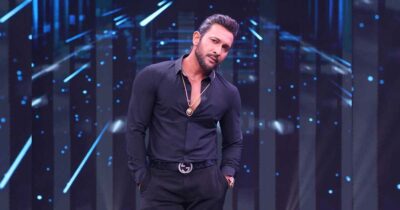
When you delve into the world of Indian dance, Terence Lewis is a name that resonates with creativity and innovation. His contemporary dance stylings have captivated audiences, adding a fresh perspective to India’s dance narrative. From the stages of Dance India Dance to So You Think You Can Dance, Lewis has not only showcased his skills but also nurtured many under his tutelage. His seamless fusion of Western dance elements, such as ballet, jazz, and contemporary, with Indian aesthetics allows him to stand out.
Through his academy, the Terence Lewis Contemporary Dance Company, he’s channeling his expertise to the next generation of dancers who are eager to take the Indian dance scene by storm. Not only has he judged countless dance shows, but his choreography has graced films like Lagaan and Galiyon ki Raas Leela-Ram Leela. The dances Lewis choreographs often tell a story, exploring social themes and narrating tales that resonate with audiences worldwide.
Terence Lewis’s work is more than just dance; it’s an exploration of cultural storytelling. His dance productions, often rich with social commentary, have been staged both in India and internationally, asserting his prowess as a global dance phenomenon. His collaborations with international artists underline his versatility and willingness to cross artistic boundaries.
Lewis’s influence on contemporary dance has garnered respect across the dance community. His productions are a testament to his dedication towards using dance as a medium of expression and storytelling, capturing the complexities of human emotions. This dedication has placed him at the forefront of Indian contemporary dance, not just as a performer but as an esteemed mentor as well.
As you admire Lewis’s body of work, you’ll find his approach to contemporary dance is as much about innovative movement as it is about the expression behind each performance. Every choreography he presents on the stage or screen is a part of the larger narrative that underpins today’s Indian dance culture. Raghav Juyal, for instance, represents the next wave of talent influenced by veterans like Lewis—a perfect example of the enduring legacy being shaped by these contemporary masters.
Uday Shankar
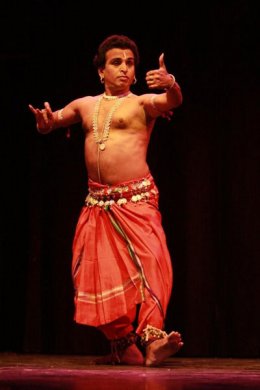
Imagine a time when Indian dance was yet to glitter on the global stage. Enter Uday Shankar, widely acclaimed as the Father of Modern Dance in India. Shankar, a pioneer in his field, brought about a seismic shift in how the world perceived Indian dance forms by blending them with Western styles. His endeavors didn’t stop at fusion – he challenged the norms of his era, creating a legacy you’ll admire as a dance enthusiast.
With an artistic background that included painting and photography, Shankar’s aesthetic sensibilities were already finely honed before he delved deep into the world of dance. Although his engagement with Indian classical dance was not formal, it was the rich tapestry of India’s folk traditions, observed keenly since childhood, that became his canvas. His Innovative ‘Hi-dance’, later known as Creative Dance, was born from a daring amalgamation of European theatrical techniques and Indian folk, classical underpinnings.
Shankar’s impressionist touch on dance extended beyond mere technique. He did not simply dance; he created an art form that resonated with storytelling, emotion, and cultural amalgamation. Through collaboration with the Russian Ballet great Anna Pavlova, he presented Radha Krishna, a ballet that celebrated Indian themes and introduced them to an international audience. Your appreciation for dance must include respect for Shankar’s trailblazing efforts to carve out this niche.
Shakti Mohan

When exploring the best dancers in India, you’ll inevitably encounter the exceptional Shakti Mohan. She’s not just a dancer; she’s a phenomenon in the realm of contemporary Indian dance. Shakti stands out for her unparalleled grace and fluidity that seems to translate every beat into a heartbeat. Her journey to fame began with her victory on the reality show ‘Dance India Dance’, where she proved that with passion and dedication, the zenith of success in the dance world is within reach.
Shakti’s versatility extends to acting, where she’s showcased her talents in films and TV shows such as ‘Dil Dosti Dance’ and ‘Yeh Jawaani Hai Deewani’. Each performance is a testament to her skill, illustrating that Shakti is more than just a dancer; she’s an artist whose medium is her body. Her captivating footwork leaves audiences spellbound, making her performances unforgettable.
When you watch Shakti perform, you’re witnessing a masterpiece in motion. Her repertoire covers more than just a range of styles – it embodies the essence of dance. This multi-talented artist doesn’t merely dance; she tells a story with each movement, connecting with the audience on an emotional level. Her dedication, evident in her sharp expressions and precise movements, has earned her recognition as India’s most renowned female dancer.
Shakti’s impact on the dance community extends beyond her performances. She’s an inspiration, a mentor to many, encouraging young dancers to pursue their dreams. Her success story signals to aspirants that with the right blend of dedication, talent, and hard work, the dance floor can be a stage for expressing one’s deepest emotions and ambitions.
Mallika Sarabhai
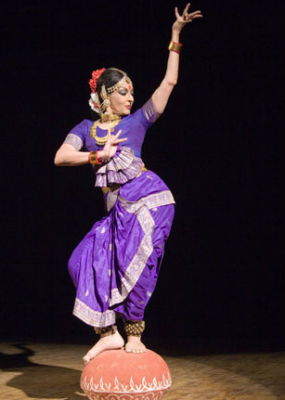
Mallika Sarabhai stands as a paragon of creative expression in Indian dance. Trained in Bharatanatyam, Kathakali, and Kuchipudi, Sarabhai has not only mastered these classical Indian dances but has ingeniously woven them with contemporary styles. Her performances are more than just a visual treat; they’re a potent medium for stirring conversations on gender inequalities, environmentalism, and human rights.
Your appreciation for dance would be incomplete without acknowledging Sarabhai’s dynamic approach to storytelling through movement. She bends the boundaries of traditional Indian dance by incorporating elements from corporate dance and theatrical techniques. This has led to pieces that are both emotionally engaging and intellectually challenging.
Sarabhai’s groundbreaking choreographies such as ‘Shakti: The Power of Women’, ‘Sita’s Daughters’, and ‘An Idea Named Meera’ resonate profoundly with audiences. These presentations have garnered critical acclaim both in India and internationally thanks to their expressive choreography and powerful narratives.
Bollywood’s frenzy of entertaining the masses with effervescent dance numbers often overshadows the underlying power of dance. However, artists like Sarabhai have skilfully utilised this power to sharpen your awareness of pressing societal issues. Through her art, you’re not just witnessing dance; you’re being called to attention, to ponder, to empathise.
India’s inclusive approach to dance is evident as it welcomes with open arms the amalgamation of Western dance styles with its rich tapestry of eight classical dance forms, along with a myriad of folk and regional dances. Pioneers like Sarabhai have been pivotal in embracing and facilitating this cultural synthesis. She’s not only a contributor but a disruptor in the Indian dance landscape, as her work has inspired and continues to inspire countless dancers and non-dancers alike to explore the world of dance in all of its forms.
Nora Fatehi
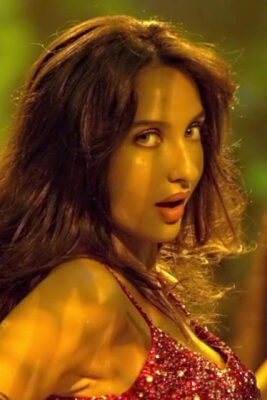
Nora Fatehi has taken the Indian dance scene by storm with her mesmerizing belly dance moves and powerful screen presence. Originally hailing from Canada, Fatehi has become synonymous with high-energy music videos and Bollywood dance numbers that leave viewers enchanted. Her journey in the Indian entertainment industry started with her appearance in the reality show Bigg Boss, but it was her dance performances that catapulted her into stardom.
Fatehi’s breakthrough came with the song ‘Dilbar’, which became a sensation, crossing half a billion views on YouTube. This massive hit demonstrated her ability to perform with a blend of sensuality and elegance, making her a household name overnight. But this was just the beginning. With each subsequent performance, she has showcased not just her dance skills but an impressive versatility, adapting to different styles and making them her own.
- Notable Performances
- Dilbar
- Garmi
- O Saki Saki
She is now widely regarded as one of the industry’s top performers, mastering complex choreography quickly. You might remember her setting the stage on fire with ‘Garmi’ and captivating millions with the dynamic ‘O Saki Saki’. Fatehi’s dance prowess is evident in her fluidity and the sheer precision of her movements.
Her appeal transcends the conventional; she effortlessly combines her Middle Eastern heritage with the vibrancy of Bollywood dance, resulting in an explosive mixture that’s hard to ignore. Some of her most remarkable performances have pushed the limits of what audiences expect from dance numbers in Indian cinema.
Nora Fatehi’s influence extends beyond film and television. Through her social media platforms, she not only entertains but educates her followers by sharing snippets of her rehearsals and fitness routines. With her unwavering commitment to dance and the arts, she continues to inspire a new generation of dancers to pursue their passion with tenacity and dedication.
Tiger Shroff
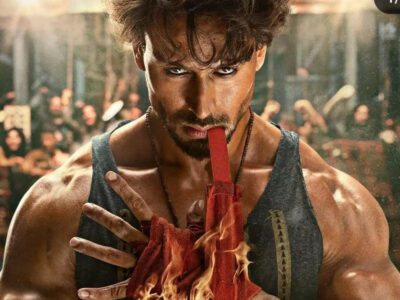
As you delve into the Indian dance panorama, Tiger Shroff emerges as a contemporary icon, a powerhouse brimming with talent. Watching legends like Hrithik Roshan, Tiger not only drew inspiration but carved out his unique niche. With a blend of fluid dance moves and awe-inspiring stunts, he’s had audiences captivated since his debut.
His journey is marked by grueling training, starting with martial arts disciplines like Wushu and Taekwondo at the tender age of four. Ingrained with the spirit of the martial arts legend Bruce Lee, Tiger’s commitment to his craft is evident in every performance, resonating with fans who follow his aspirational fitness and dance regimes.
The evolution of Tiger Shroff in the Indian dance culture is not just felt through his electric performances but also through his social media presence. His Instagram handle is more than just a gallery; it’s a testament to his dedication, featuring snippets of rehearsals and finished routines that highlight his acrobatic skills and precise execution.
| Aspect | Details |
|---|---|
| Debut Movie | Heropanti |
| Dance Influence | Hrithik Roshan |
| Martial Arts | Wushu and Taekwondo |
| Inspiration | Bruce Lee |
| Instagram Growth | A substantial follower base engaging with dance and stunt posts |
With every film and performance, Tiger Shroff pushes the boundaries, incorporating complex choreographies with effortless ease. His role in movies like Heropanti and the utilization of his martial arts background creates a fusion that is both unique and mesmerizing to watch.
Shroff’s contribution goes beyond cinematic dance numbers. He is actively raising the bar for aspiring dancers, positioning himself as a role model for the younger generation eager to merge dance with dynamic athleticism. Through his work, he provides a glimpse into the rigorous work ethic required to excel in the competitive entertainment industry.
Those captivated by the infectious energy of Tiger Shroff’s dance are privy to a phenomenon where traditional boundaries of dance are expanding to embrace martial artistry, creating an exhilarating blend that leaves viewers asking for more.
Remo D’souza
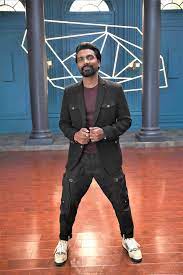
When you explore the current dance landscape in India, Remo D’Souza stands out with his genre-defying choreography and contributions to the realm of dance. As a true maestro in blending classical Indian dance with international styles, Remo’s work crafts a unique narrative through movement. With an eye for Innovative Fusion, Remo has successfully amalgamated Bharatnatyam, Jazz, and Bollywood dance forms. This fusion results in breathtaking performances that challenge conventional technique and captivate audiences with their originality.
In the dynamic world of dance, Remo’s signature moves are synonymous with smooth transitions and rhythmic precision. The impact he’s made on contemporary dance is marked by his dedication to creating fresh choreographies that not only entertain but also elevate the art form. Excellence in Motion is not an overstatement when you witness his creativity come to life on stage; it’s a lived experience of watching an artist at the pinnacle of his craft.
Beyond captivating audiences, Remo is celebrated for his mentorship and encouragement of emerging talent. This nurturing of the next generation ensures that the legacy of pushing the frontiers of dance will continue. It’s that forward-thinking ethos that distinguishes him as not just a performer but also a visionary who shapes the future of dance in India and beyond.
As you follow the trajectories of influential dancers, Remo’s contributions reveal the possibilities inherent in dance when driven by passion and innovation. His journey is a testament to what can be achieved through hard work and imagination, serving to inspire dancers both within India and on the world stage. Whether it’s the effortless fusion of Jazz and Bharatnatyam or the seamless incorporation of Bollywood vibrancy, you’ll find that Remo D’Souza’s artistic expression is a testament to the transformative power of dance.
India’s Rich Dance Heritage
Dance remains a profound expression of India’s cultural diversity and rich traditions, rooted in the country’s deep artistic legacy. As you immerse yourself in the panorama of Indian dance, it’s essential to appreciate the variety and historical importance of its classical and folk forms. The dancers you admire today are standing on the shoulders of a vast, intricate heritage of movement and rhythm.
Classical Dance Forms
India’s classical dance repertoire is an exquisite gallery of storytelling, devotion, and intricacy, encapsulating the spiritual ethos of the region. With eight accredited classical dance forms recognised by the Sangeet Natak Academy, the country’s national academy for music, dance, and drama, one begins to fathom the depth of this cultural facet.
- Bharatanatyam from Tamil Nadu epitomises grace and purity.
- Kathak, originating from North India, captivates with its swift spins and expressive gestures.
- Odissi from Odisha enchants with its sculptural poses and lyricism.
- Kathakali from Kerala portrays dramatic storytelling with elaborate costumes.
- Manipuri celebrates its eponymous northeastern state with its fluid movements.
- Kuchipudi from Andhra Pradesh mesmerises with its quick footwork and vibrant drama.
- Mohiniyattam, also from Kerala, seduces with its feminine languor.
- Sattriya from Assam, a newer entrant, harmoniously blends dance, drama, and music.
Each form boasts a distinct blend of music, costume, and choreography, inherently tied to its regional roots yet universally applauded for their complexity and emotive power.
Folk Dance Forms
Beyond the classical spectrum, the diverse landscape of India flourishes with an array of folk and regional dance forms, each narrating a different story from the heartlands. Every state, every community has its dance, reflecting the life, ethos and beliefs of the people.
- Punjab’s spirited Bhangra and lyrical Giddha evoke the vibrancy of harvest celebrations.
- Garba and Dandiya Raas from Gujarat reverberate with the fervour of Navratri festivities.
- Rajasthan’s Ghoomar captures the essence of Rajputana grace, while Kalbelia mirrors the sinuous movements of serpents.
- West Bengal’s Chhau combines martial arts with tribal motifs, and Tamang Selo of Sikkim pulsates with the rhythm of mountain life.
The spontaneous exuberance and vivid attire associated with folk dances demonstrate the organic evolution of these art forms, handed down through generations, alive with communal participation and celebratory in nature. The conversation of dance in India is incomplete without acknowledging the roots that sustain even the most modern interpretations you see on stage and screen today.
Contemporary Dance Scene in India
Bollywood Dance
Immerse yourself in the pulsating heart of India’s performing arts with Bollywood dance, a genre captivating millions with its vibrant mix of storytelling, emotion, and cultural fusion. Bollywood’s dance sequences are not just eye-catching entertainment; they’re a language conveying narratives within Indian cinema. You’ll find that Bollywood dancing is much more than choreographed moves; it’s an emotion, an expression that resonates deeply with the audience.
Groundbreaking dancers like Hrithik Roshan have redefined Bollywood dance, merging classical Indian steps with modern aesthetics to craft performances that resonate with perfection. Their influence can’t be overstated; each iconic routine sparks trends and inspires countless fans to follow in their rhythmic footsteps. Beyond the silver screen, these dancers have become symbols of the genre’s evolution, and it’s their adaptability which keeps Bollywood dance fresh, relevant, and forever dynamic.
Western Dance Forms
As Western dance styles made their entry into India, they didn’t just merge; they exploded onto the scene, embraced with enthusiasm across the nation. Your understanding of India’s dance narrative wouldn’t be complete without acknowledging how the fusion of Western genres like jazz, ballet, and contemporary styles have meshed with the rich tapestry of Indian dance.
Mentors like Terence Lewis have been instrumental in ushering this blend into the mainstream, infusing the elasticity and techniques of western dance with the expressive potency of Indian aesthetics. Against a backdrop abundant with eight accredited classical dance styles and numerous folk traditions, this symbiosis demonstrates India’s love affair with dance innovation. It’s this continual cross-pollination of ideas and inspirations that ensures India’s contemporary dance scene remains at the forefront of artistic expression.
Conclusion
You’ve seen how India’s dance landscape thrives on innovation and cultural fusion. Icons like Hrithik Roshan have not only captivated audiences but also inspired a new generation of dancers. The blend of Western styles with Indian tradition, championed by mentors such as Terence Lewis, keeps the dance scene vibrant and ever-evolving. It’s clear that the dynamism of India’s best dancers doesn’t just reflect the country’s rich heritage—it’s also shaping the future of dance worldwide. Keep an eye on this exciting space, as the rhythm of innovation shows no signs of slowing down.
Frequently Asked Questions
Who are 5 famous dancers in India?
Some notable Indian classical dancers include Bharatanatyam exponents such as Rukmini Devi and Padma Subrahmanyam, along with other personalities like Vyjayanthimala, Sheema Kermani, and Padmini.
Who is the king in India’s best dancer?
The ‘King of Contemporary’ title in ‘India’s Best Dancer 3’ was claimed by Samarpan Lama from Pune.
Who is India’s No 2 dancer?
Allu Arjun is often regarded as India’s No 2 dancer, famed for his stylish moves and impeccable performance in movies like Arya-2.
Who is the best female dancer?
Among the world’s top female dancers are Russian ballerina Natalia Osipova, English ballerina Margot Fonteyn, French dancer Sylvie Guillem, and historical figures like Anna Pavlova and Marie Taglioni.
Who won Best Dancer 2023?
The winner of India’s Best Dancer 3 in 2023 was Samarpan Lama, who expressed his joy and acknowledged the fulfillment of his dreams upon winning the competition.





